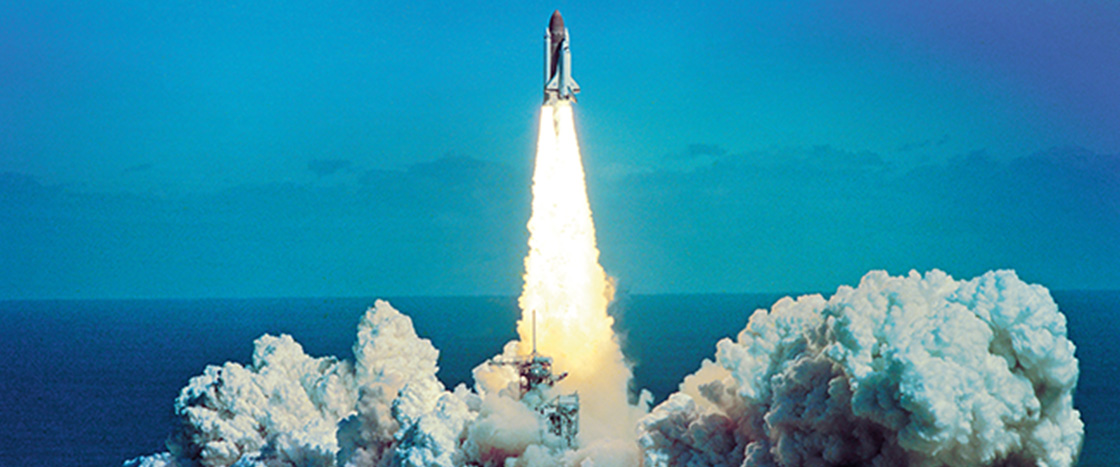10, 9, 8, 7 . . .
It was January 28, 1986, an unusually chilly morning in Florida. A spacecraft called Challenger was about to blast off. Seven crew members were strapped into their seats, waiting for the ear-splitting roar of the rockets that would shoot them into space.
Challenger was one of five space shuttles built by the U.S. These incredible spacecraft were designed to launch into space, circle Earth, and then land back on the ground like an airplane. They were nicknamed “space trucks” because they could carry a lot of equipment as well as many astronauts.
But there was something unique about this mission. One of the astronauts wasn’t really an astronaut. She was a 37-year-old social studies teacher from New Hampshire named Christa McAuliffe. She was the first ordinary citizen to be part of a space mission.
The whole country was swept up in the excitement. Just imagine—a teacher going to space! On the day of the launch, kids in classrooms across the U.S. sat at the edge of their seats, eyes glued to the television. Near the launch site, crowds gathered outside to watch what would surely be a thrilling scene.
Instead, they were about to witness a shocking disaster.
At 11:38 a.m., the rockets fired. Clouds of bright-white steam curled around the launchpad. It would take many tons of fuel to lift Challenger off the ground and into space. The spacecraft rose slowly at first, sailing straight up. Gaining speed, it rose higher and higher, gleaming in the sun.
Then catastrophe struck.
A stream of fire suddenly shot out from the side of one of the rockets. And 73 seconds after launch, the fuel tank exploded.
Down on the ground, people watched in confusion. They tried to make sense of the fireball and strange cloud that had suddenly appeared high up in the sky. Then the awful truth became clear: Challenger had blown up. All seven members of the crew had been lost.
Near the launch site, people stopped their cars in the street. Some cried. Others pounded their fists in anger. In schools, students and teachers stared at their televisions in shock.
How could this have happened?
10, 9, 8, 7 . . .
It was a cold morning in Florida on January 28, 1986. A spacecraft called Challenger was about to blast off. Seven crew members were waiting in their seats. Soon the rockets would roar, sending them into space.
Challenger was an amazing spacecraft. It was made to fly through space, circle Earth, and then land back on the ground like an airplane.
But there was something special about this mission. One of the astronauts was a teacher named Christa McAuliffe. She was the first regular person to go into space.
The whole country was excited. A teacher going to space! Kids in classrooms across the U.S. were watching Challenger begin its mission on TV. In Florida, a big crowd had come to see the spacecraft take off.
Instead, they were about to see an awful disaster.
At 11:38 a.m., the rockets roared. The spacecraft slowly rose into the sky. It went higher and higher, shining in the sun.
Then catastrophe struck.
The side of one of the rockets caught on fire. And 73 seconds after take-off, the fuel tank exploded.
At first, people on the ground were confused. They tried to understand the fire and the strange cloud high in the sky. Then the truth became clear: Challenger had blown up. All seven members of the crew had died.
People watching in Florida stopped their cars in the street. Some cried. Others were angry. In schools, students and teachers stared at their TVs in shock.
How could this have happened?

